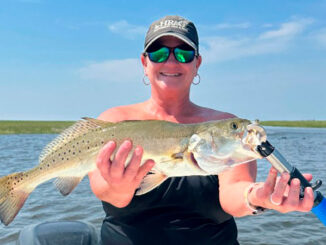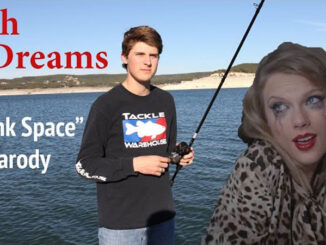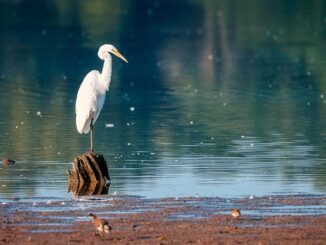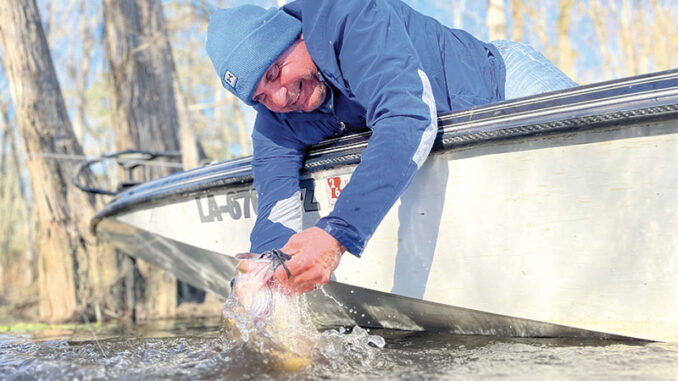
You don’t always have to run for miles to find good fishing
As bass fishermen, we instinctively search for structure to catch bass. Whether it’s a bulkhead, a wharf, or a rock-lined shore, there’s no arguing that structure factors significantly into the equation of catching bass.
Paul Paille of Abita Springs is one of those bass fishermen who is infatuated with structure.
“Oh yeah…docks, pilings, rock bottoms, stickouts (trees that stick out in the river)…that’s what I’m looking for,” Paille said. Fortunately, it didn’t take Paille long to discover that some of the best structure is often available only 50 feet from where he parks his truck and trailer in the morning.
Paille (pronounced “pie”…it’s French) makes a habit of fishing boat launches for bass and said boat launches offer some of the most unique ambush points in the entire river.
“Those launches are filled with human-made structure which makes great hiding places for bass, not to mention hard bottoms which attract baitfish,” he said.
Another thing about boat launches is the amount of debris on the bottom that comes from people knocking things off of the wharf.
“Think about how many things are dropped off the dock in one year, then multiply that by decades,” Paille said. “That stuff adds up over time.”
Another bonus to fishing launches is the runoff.
“Most boat launches also have ditches with water draining into the river,” he said. “I always know where culverts are and fish them after rain.”
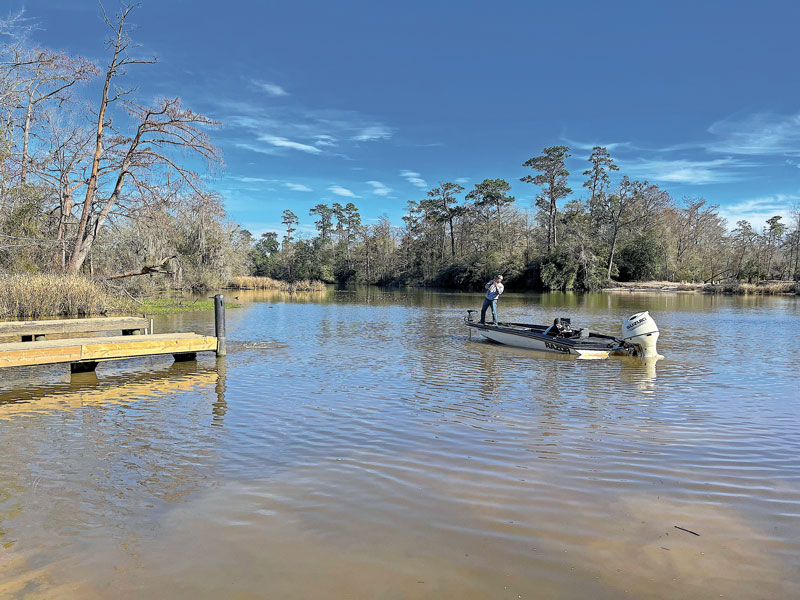
Fishing every day
Paille grew up fishing for bass in a pond located on his family’s property in Abita Springs.
“Back in the 70s there was nobody out here so that’s all we had to do was fish,” he said. “We’d fish that pond every day for bass.”
As he grew up, Paille began to venture out to the rivers and bayous on the Northshore.
At age 22, Paille started coaching basketball, football and baseball at Pontchatoula High School after exiting the Marine Reserves. While coaching, Paille met Dwayne Dykes, who also loved to bass fish and followed professional bass leagues as a youngster. The two became friends and started fishing together. That’s when Dwayne suggested he fish tournaments because it fit so well with his coaching abilities. He did, and that’s all it took for Paille’s bass fishing to reach another level.
“Oh I absolutely loved it,” he said. “It made me fish harder and challenge myself to get better.”
But it was clear to Paille that he needed to get WAY better to start beating the local river sticks.
“I knew I needed to start learning the rivers better if I was going to beat guys like Jason Pittman and Kyle Hills,” he said.
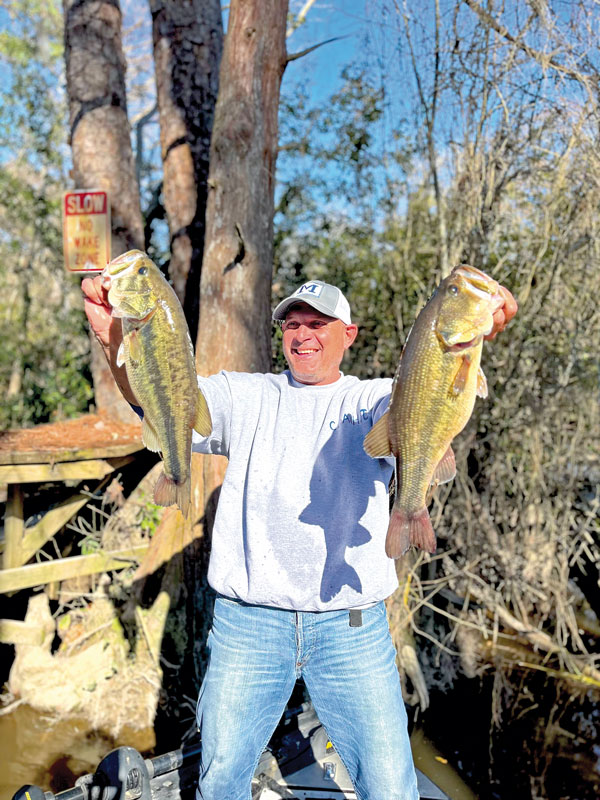
By this time, Paille was the head coach of basketball at Mandeville High School and between the spring season and summer basketball, he forced himself to fish every day in order to improve.
“I fished for 70 days straight every spring for 3 years,” he said. “You would not believe how much you learn when you fish day after day. I started putting on local tournaments to give me more opportunity to fish. That year I fished a tournament every Saturday and Sunday.”
During this time, Coach Paille learned just how important it was to incorporate boat launches into his gameplan.
The Coach Paille setup
Paille’s go-to bait is a 3/16 tungsten Shaky Head with a 6th Sense 6.3-inch worm. He likes the Shakey Head over the Texas rig.
“I use a Shaky Head instead of the Texas rig because, with the Shaky Head, there’s an immediate transfer of energy to the bait,” he said. “I don’t set the hook till I feel the tungsten tap the inside of its mouth. Once I learned how to detect that, I hardly ever miss a bass. I fish so many hours with the Shaky Head that I can tell you exactly what’s biting it like a perch or a spotty bass.”
He ties the lure onto a 19-foot 14-pound fluorocarbon leader with a 20-pound 832 blue braid main line.
“Flouro is invisible and I like the way it sinks and doesn’t vibrate in water,” he said. “The braid allows for ease and accuracy in casting.”
Paille uses a 7.3-foot Duckett Green Ghost medium-heavy rod paired with a Tournament Lew’s reel (8.3-9 gear ratio).
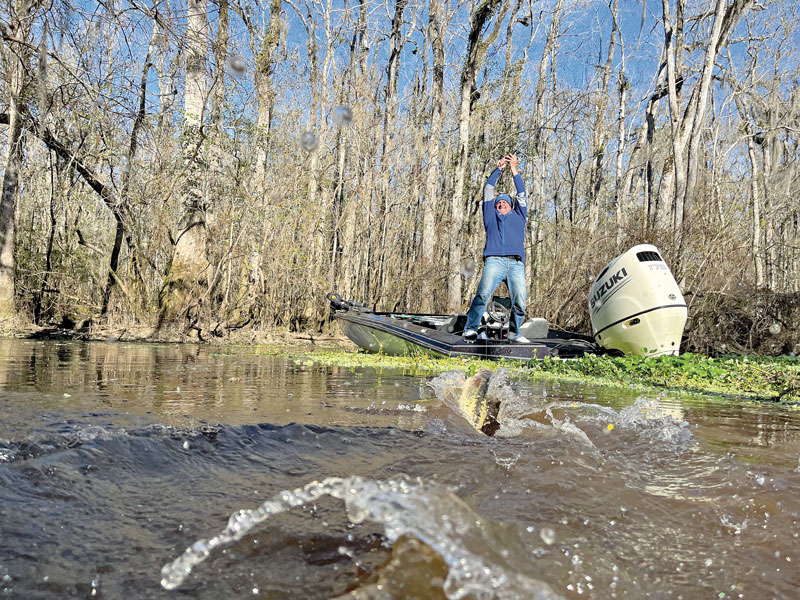
Boat launch basics
When fishing boat launches, Paille thoroughly covers each feature of the launch.
“I like to start out making long casts to the points of the docks,” he said. “I know a few sac-a-lait fishermen who fish from land and drop Christmas trees at the end of the dock. This provides a brush pile to attract bait fish, which attracts bass.”
As Paille nears the launch he switches gears.
“As I get closer I use a pull-up and drop-down technique, then a swim-and-switch technique as I make parallel casts along the docks,” Paille said.
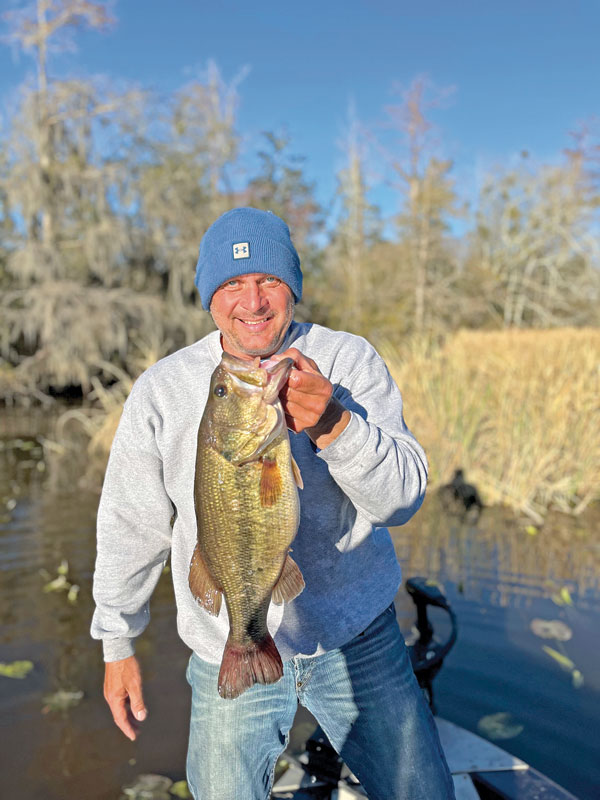
When fishing back-down concrete ramps, Coach targets two areas: the end of the slab and the washout hole.
“I like to make two flips down the middle of the launch to the edge of the concrete and then work the bait into the washout hole,” he said. “Think about how many boats are driven up onto their trailers. When that engine is gunned, it creates a hole in the middle of the backdown alley.”
After working the bottom, Paille changes things up.
“Before I’m finished with the launch I’ll make casts parallel with the dock using a buzzbait and a crankbait,” he said.
During the early morning hours, Paille leans more on the buzzbait because bass are more likely to strike topwater during those times.
Since incorporating boat launches into his fishing routine, Paille has won numerous local tournaments. He recommends putting in the time during the winter months to scope out the launch.
“I like to learn what’s under the water in late winter when the north wind blows all the water out exposing hidden structure,” he said. “I take pictures and study where the best ambush spots are.”
As the spawn continues in April, these launches provide lots of shallow water options and the hard bottoms that bass are searching for when the weather warms. So next time you put the boat in the water, think twice before you make that long run looking for bass; what you’re looking for may be right underneath your feet!
